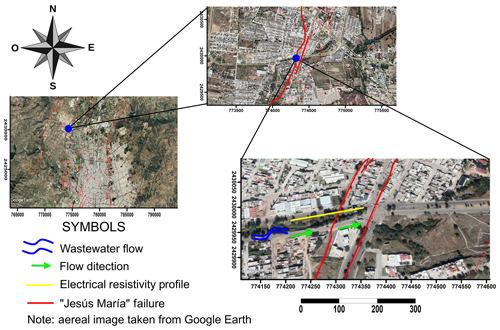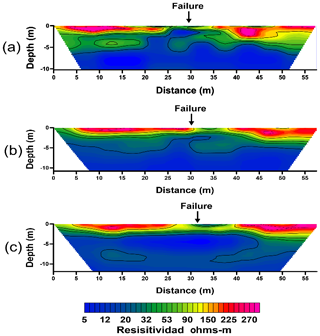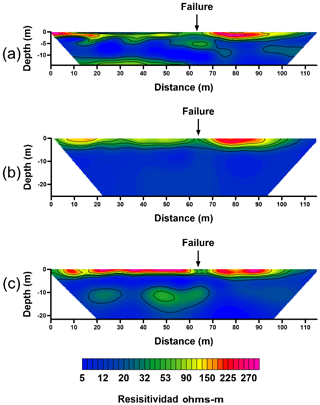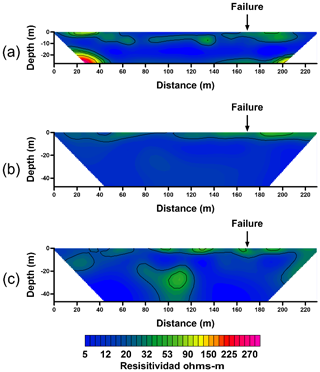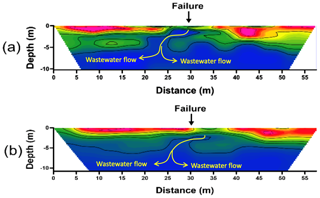Infiltration of surface water through subsidence failure assessment applying electric prospecting, case Aguascalientes Valley, Mexico
Land subsidence is an anthropogenic hazard triggered by different causes, one of them is groundwater overexploitation over aquifer systems composed for granular compressible sedimentary fill. One of the effects of this phenomenon is the generation and reactivation of ground failures, becoming risk points for aquifer pollution through the fast infiltration of contaminated water.
A system of failures and fractures has developed in the Aguascalientes valley since 1980's when groundwater overexploitation became intensive. Currently, the entire valley present regional subsidence and several ground failures have developed; many of them crossing surficial water flows and sewage pipes, thus, inducing filtering of domestic wastewater to the subsoil and increasing the environmental hazard for the aquifer system.
In this work, we present the results of a study to assess the surficial water infiltrations through a subsidence related ground failure crossing a small stream, which carries domestic wastewater. Additionally, we investigate the acquisition method of Electrical Resistivity Tomography (ERT) and the electrode placement more suitable to detect the flow of contaminated water through the studied ground failure.
To find out the potential leakage, we use electric geophysical methods, applying Schlumberger, Wenner and dipole-dipole arrangements with electrode separations from 2.5 to 10 m in order to explore a depth from 9 to 30 m.
The obtained results showed that the Schlumberger configuration appears to be more helpful to detect changes in the stratigraphy toward depth, while dipole-dipole and Wenner are more suitable to detect lateral variations such as the vertical wastewater leakage in the first 6 to 8 m depth.
Resulted resistivity models showed that in the first 10 m depth, the contaminant flow follow with a vertical path through the ground failure, then, the it becomes horizontal, flowing through the more permeable soil strata. Therefore, for the studied sites, the filtration of domestic wastewater through ground failure does not represent an immediate hazard to the aquifer system. Nevertheless, ground failures crossing damaged wastewater pipes or contaminated surficial water flows in Aguascalientes Valley, could induce the infiltration of polluted water to the near surface strata, favoring a potential aquifer pollution in a long term.






